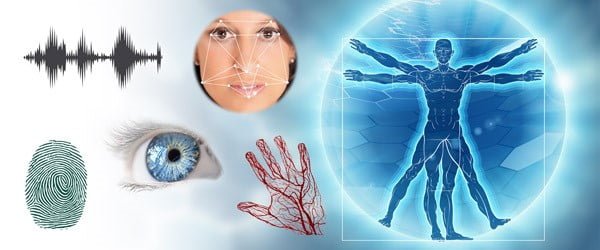In order to compare biometric applications, it is useful to know something about the basics. In this article, we briefly outline the ‘basics of biometrics’ for you.
1. General definition of biometrics
2. Commonly used biometric features
Commonly used biometric features include:
- Fingerprints
- Eye (retina and iris)
- Vein pattern in the palm or finger
- Face, voice and speech
3. Why biometrics?
Biometric data is not transferable to other people in the same way that cards, keys and passwords are. Secondly, biometrics are much less susceptible to fraud. Photographs, signatures and access cards are susceptible to fraud, which means that a person’s identity cannot always be established with certainty in the process. A third feature of using body characteristics for biometric applications is that they are basically non-removable. Want to know more or looking for a biometric security solution for your organisation?
4. Biometric techniques
To ‘read’ the body characteristics mentioned above, biometrics uses several techniques. Think of:
- Photo and video camera technology
- Pressure measurement
- Heat measurement
- Voice recognition
- Computer technology
5. The benefits of biometrics in identification
The advantage that biometrics offers in security or access solutions is twofold. On the one hand, ease of use: you don’t have to remember anything or take anything with you. On the other hand, the level of security: identification based on biometrics is much less susceptible to fraud.
With identification, it has another added benefit. It is completely personalised so offers little to no chance of identity fraud.
Strong together! Biometrics are regularly used in conjunction with conventional forms of identification. This increases the assurance that you are dealing with the right person.
Property or knowledge or biometrics? They are super strong together!
So far, ‘property’ (think passport or card) and ‘knowledge’ (think password or PIN) have always been the main forms of identification and security. To achieve an even higher level of security, combinations of the two have also been common for some time (think a card with PIN). Biometric security is not only an alternative to these traditional forms of identification, but offers opportunities to create an extremely high level of security by combining all three forms.
Want to know more or looking for a biometric security solution for your organisation?
